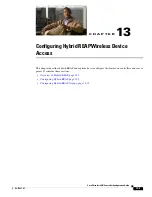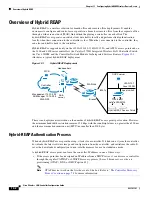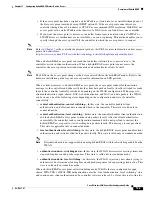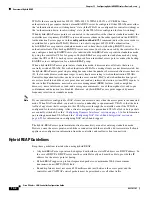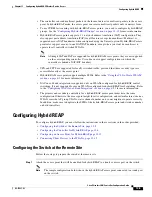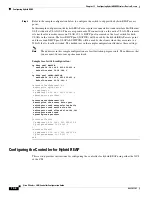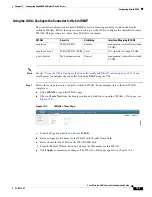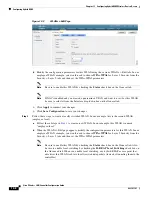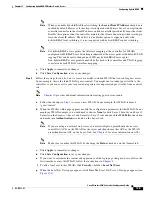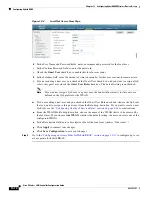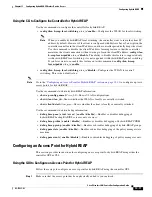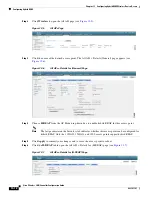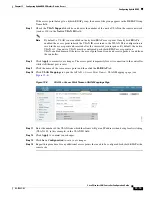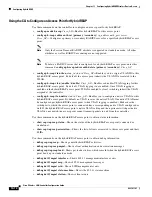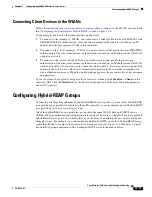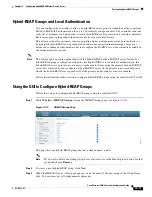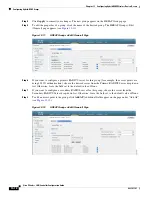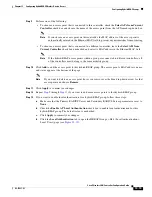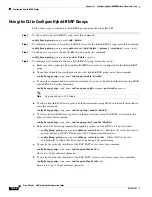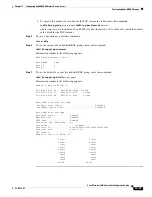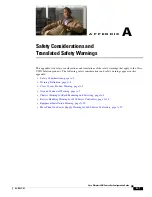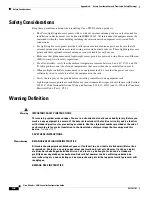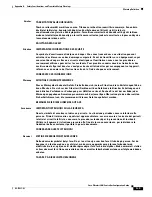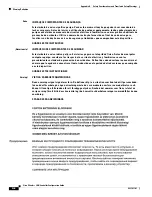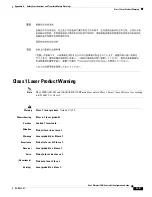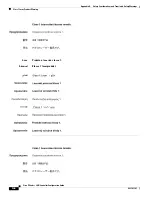
13-15
Cisco Wireless LAN Controller Configuration Guide
OL-17037-01
Chapter 13 Configuring Hybrid REAPWireless Device Access
Configuring Hybrid-REAP Groups
Connecting Client Devices to the WLANs
Follow the instructions for your client device to create profiles to connect to the WLANs you created in
the
“Configuring the Controller for Hybrid REAP” section on page 13-6
.
In our example, you would create three profiles on the client:
1.
To connect to the “employee” WLAN, you would create a client profile that uses WPA/WPA2 with
PEAP-MSCHAPV2 authentication. Once the client becomes authenticated, it should get an IP
address from the management VLAN of the controller.
2.
To connect to the “local-employee” WLAN, you would create a client profile that uses WPA/WPA2
authentication. Once the client becomes authenticated, it should get an IP address from VLAN 101
on the local switch.
3.
To connect to the “guest-central” WLAN, you would create a client profile that uses open
authentication. Once the client becomes authenticated, it should get an IP address from VLAN 101
on the network local to the access point. Once the client connects, the local user can type any http
address in the web browser. The user is automatically directed to the controller to complete the
web-authentication process. When the web login page appears, the user enters his or her username
and password.
To see if a client’s data traffic is being locally or centrally switched, click
Monitor
>
Clients
on the
controller GUI, click the
Detail
link for the desired client, and look at the Data Switching parameter
under AP Properties.
Configuring Hybrid-REAP Groups
In order to better organize and manage your hybrid-REAP access points, you can create hybrid-REAP
groups and assign specific access points to them. Per controller, you can configure up to 20 hybrid-REAP
groups with up to 25 access points per group.
All of the hybrid-REAP access points in a group share the same WLAN, backup RADIUS server,
CCKM, and local authentication configuration information. This feature is helpful if you have multiple
hybrid-REAP access points in a remote office or on the floor of a building and you want to configure
them all at once. For example, you can configure a backup RADIUS server for a hybrid-REAP group
rather than having to configure the same server on each access point.
illustrates a typical
hybrid-REAP group deployment with a backup RADIUS server in the branch office.

